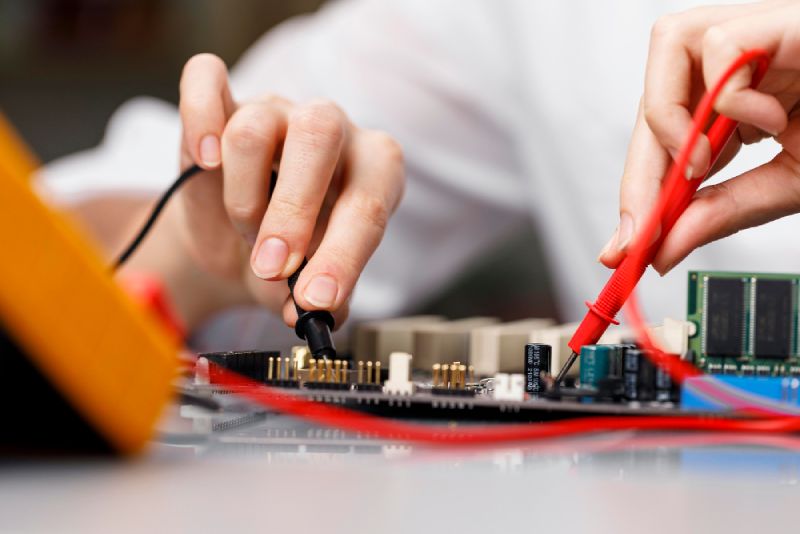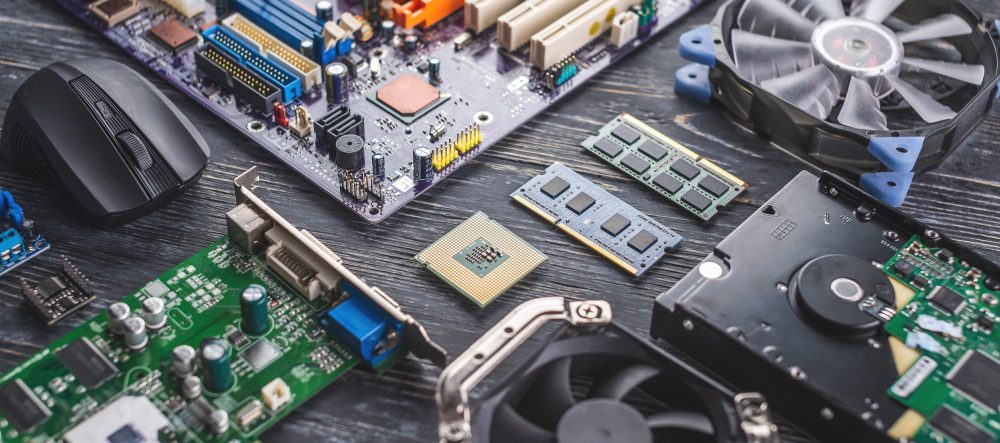Does motherboard use electricity?
Yes, a motherboard does use electricity. It is an essential component of a computer that connects various hardware components and allows them to communicate with each other. Without electricity, the motherboard would not be able to function properly.
The Function of a Motherboard
A motherboard acts as the main circuit board of a computer and provides power and connectivity to all the other components. It has several important functions:
- Power distribution: The motherboard receives power from the power supply unit (PSU) and distributes it to the different components, such as the processor, memory, and storage devices.
- Data transfer: It facilitates the transfer of data between various hardware components, including the CPU, RAM, storage devices, and peripherals like graphics cards and sound cards.
- Expansion slots: The motherboard provides expansion slots for adding additional components or upgrading existing ones, such as graphics cards, network cards, and storage devices.
The Role of Electricity
Electricity is crucial for the motherboard to perform its functions effectively. It powers the various circuits on the motherboard and enables the flow of data between components.
“Without electricity, the motherboard would be inert and incapable of powering any other component.”
The main source of power for the motherboard comes from the PSU, which supplies direct current (DC) power. The PSU is connected to the motherboard via a power connector, providing the necessary voltage for the motherboard to function.
Power Consumption
The amount of electricity consumed by a motherboard varies depending on several factors, including the components installed, usage patterns, and power management settings. Modern motherboards are designed to be more energy-efficient, incorporating features like power-saving modes and voltage regulation mechanisms.
Typically, a motherboard consumes a relatively small amount of power compared to other components in a computer, such as the CPU and graphics card. However, it is still an essential consumer of electricity as it powers and facilitates the operation of these other components.
What Voltage is a Motherboard PC?
A motherboard is the central circuit board in a computer that connects all the components together. It serves as a hub for power supply, data transfer, and communication between hardware components. Understanding the voltage requirements of a motherboard is crucial for ensuring its proper functionality and compatibility with other PC components.
Power Supply Voltages
A motherboard generally requires two primary power supply voltages: +12V and +5V. The +12V rail is responsible for providing power to devices that require higher wattages, such as the CPU, graphics card, and hard drives. On the other hand, the +5V rail powers lower-wattage devices like memory modules, USB ports, and other peripherals. These power supplies are regulated by voltage regulators on the motherboard itself.
Other Voltage Requirements
In addition to the main power supply voltages, motherboards also require other voltages for specific components or functions:
- +3.3V: This voltage is used for powering certain integrated circuits and memory modules.
- +1.8V: This voltage is commonly used for supplying power to the chipset and other onboard peripherals.
- +1.5V: Typically used for DDR3 memory modules, this voltage ensures stable operation of the RAM.
Importance of Voltage Regulation
Voltage regulation is crucial to protect the motherboard and connected components from potential damage caused by unstable voltages. Motherboards feature dedicated voltage regulation modules (VRMs) that ensure stable and appropriate voltage delivery to different components. These VRMs receive raw power from the main power supply and convert it into the required voltages for each component.
Quote: “Proper voltage regulation is essential for the longevity and stability of a motherboard. It ensures that components receive the correct voltage levels, preventing overheating or electrical damage.”
Does PC waste electricity?
Many people use personal computers (PCs) for various tasks, including work, entertainment, and communication. While PCs offer numerous benefits, one concern among users is whether they waste electricity. Let’s explore this topic and understand how PCs consume energy and if there are ways to minimize their impact on electricity consumption.
Energy Efficiency of PCs
PCs consume electricity based on their power requirements and usage patterns. The energy efficiency of a PC depends on factors such as its hardware components, age, and power management settings. Newer PCs are generally more energy-efficient than older models. Manufacturers strive to develop energy-efficient hardware that meets user demands while minimizing environmental impact.
Energy Star ratings are often used to determine the energy efficiency of electronic devices, including PCs. These ratings indicate a product’s compliance with energy-saving standards. When purchasing a new PC, it is advisable to look for Energy Star-certified models, as they typically consume less electricity compared to non-certified alternatives.
The Impact of Power Management Settings
PCs have built-in power management settings that allow users to control energy consumption. By adjusting these settings, users can optimize their PC’s energy usage. For example, enabling sleep or hibernate modes when the PC is idle for extended periods can significantly reduce electricity waste. Configuring the PC to automatically turn off the display or enter sleep mode after a certain period of inactivity also helps conserve energy.
The Role of User Behavior
While the hardware and power management settings influence electricity consumption, individual user behavior also plays a significant role. Practices such as turning off the PC when not in use, unplugging unnecessary peripherals, and avoiding excessive multi-tasking or resource-intensive applications can all contribute to minimizing electricity waste.
The Importance of Energy Conservation
Energy conservation is not only beneficial for reducing electricity bills but also for minimizing environmental impact. By being conscious of our PC usage and implementing energy-saving practices, we can contribute to conserving resources and reducing carbon emissions.
“Using power management settings and adopting energy-saving practices can help minimize electricity waste caused by PCs.”
It’s essential to strike a balance between the convenience and functionality of PCs and their impact on electricity consumption. By making informed choices, using energy-efficient hardware, configuring power management settings, and adopting mindful user behavior, we can harness the benefits of PCs while minimizing their energy footprint.
Can high voltage destroy a PC motherboard?
High voltage can indeed pose a significant threat to a PC motherboard, potentially leading to irreversible damage. When the voltage supplied to a computer exceeds its recommended levels, it can result in various issues that may affect the motherboard and other components.
Effects of high voltage on a PC motherboard
Overheating: Excessive voltage can cause components on the motherboard to overheat, leading to system instability and potential damage.
“High voltage can result in blown capacitors or melted traces on the motherboard.”
Power surge: A sudden surge in voltage can occur due to lightning strikes or faulty power supply units (PSUs). This surge can overwhelm the motherboard’s protective circuits and cause immediate damage.
Protective measures against high voltage
To safeguard your PC motherboard from high voltage damage, consider implementing the following measures:
- Use a quality surge protector or uninterruptible power supply (UPS) to regulate voltage levels.
- Ensure your power supply unit (PSU) has built-in surge protection capabilities.
- Regularly inspect and replace faulty power cables or adapters.
- Consider installing a voltage stabilizer or regulator for additional protection.
How much voltage does CPU need?
CPU, also known as the Central Processing Unit, is the brain of any computer system. It performs complex calculations and executes instructions to ensure smooth operation of various tasks. One crucial factor that determines the performance and stability of a CPU is the voltage it requires.
Understanding CPU Voltage
The voltage required by a CPU depends on its architecture, manufacturing process, and clock speed. In general, CPUs require low voltages to minimize power consumption and heat generation. The specific voltage range is determined by the manufacturer and is indicated by the CPU’s voltage specification.
Undervolting and overvolting are techniques used to adjust the voltage supplied to a CPU. Undervolting involves providing the CPU with a lower voltage than its specified value, while overvolting involves supplying it with a higher voltage. These practices are commonly used by enthusiasts to improve performance or optimize power consumption, but they should be done with caution as they can potentially damage the CPU or decrease its lifespan.
Importance of Proper Voltage
Providing the correct voltage to a CPU is crucial for its optimal functioning. Insufficient voltage can cause instability, system crashes, and errors, while excessive voltage can lead to overheating, reduced lifespan, and even permanent damage to the CPU. Proper voltage ensures reliable performance and longevity of the CPU.
Voltage Regulation
To ensure that the CPU receives the correct voltage, modern motherboards feature voltage regulation modules (VRMs) that convert the constant 12-volt input from the power supply into the required voltage levels for the CPU. These VRMs help maintain stable voltages under different load conditions and provide protection against voltage fluctuations and spikes.
It’s important to note that different generations and models of CPUs can have varying voltage requirements. Therefore, it’s essential to refer to the CPU’s documentation or the manufacturer’s specifications to determine its exact voltage range.
Note: Improperly adjusting the voltage of a CPU can void warranties and may result in irreversible damage. It is recommended to consult professional advice or follow official guidelines provided by the CPU manufacturer before attempting any voltage modifications.
Is Europe 50 or 60 Hz?
One of the most common questions regarding electrical systems is whether Europe operates on a 50 Hz or a 60 Hz frequency. The answer is that Europe predominantly uses a 50 Hz frequency. However, it is important to note that there are exceptions to this rule.
Standard Frequency in Europe
In most European countries, the standard frequency for the electrical grid is 50 Hz. This frequency was established early on and has become widely adopted across the continent. It is important for electrical devices used in European countries to be compatible with this frequency.
Motivation for Choosing 50 Hz
The choice of 50 Hz frequency can be traced back to the early development of electrical systems. At the time when frequency standards were being established, there were significant technical and economic considerations that influenced the final decision.
“The adoption of 50 Hz frequency in Europe allowed for greater consistency in power distribution, reduced costs associated with transmission losses, and improved compatibility among neighboring countries.”
Exception to the Rule
While the majority of Europe operates on a 50 Hz frequency, there are some exceptions. For instance, a few countries such as Cyprus, Malta, and parts of Italy have a 60 Hz frequency. These variations may be due to historical reasons or specific requirements of certain industries.
Implications for International Travelers
For international travelers from regions where the standard frequency is 60 Hz, it is vital to consider the compatibility of electronic devices before using them in European countries. Many modern devices, such as smartphones and laptops, are designed to work on both 50 Hz and 60 Hz frequencies. However, it is always advisable to check the device specifications to ensure compatibility.
In conclusion, while Europe predominantly operates on a 50 Hz frequency, there are exceptions to this rule. Understanding the standard frequency in any given country is essential for ensuring the compatibility of electrical devices and avoiding potential issues related to power supply.
Conclusion
A motherboard PC requires several different voltage levels to power its various components. These voltages, including +12V, +5V, +3.3V, +1.8V, and +1.5V, are crucial for stable operation and compatibility with other PC elements. The onboard voltage regulators and VRMs play a vital role in ensuring that the motherboard receives regulated power supply, protecting it from potential damage caused by fluctuations or improper voltage delivery.
In conclusion, high voltage can be detrimental to a PC motherboard, leading to overheating, power surges, and other damaging effects. It is crucial to take preventive measures, such as using surge protectors and maintaining a stable power supply, to minimize the risk of damage and ensure the longevity of your computer system.



